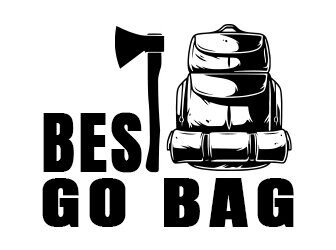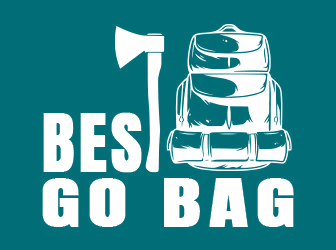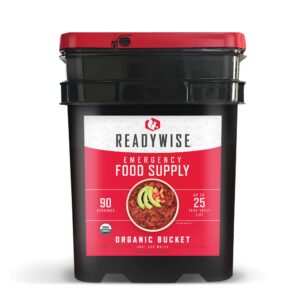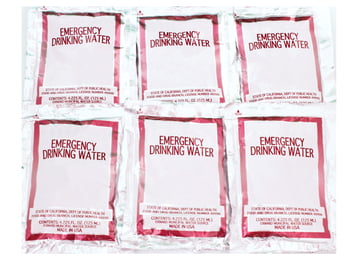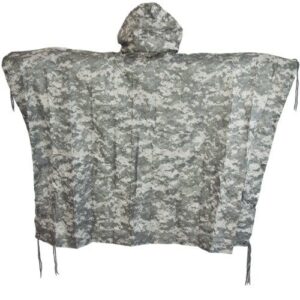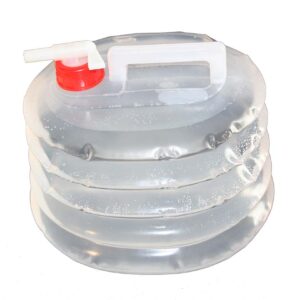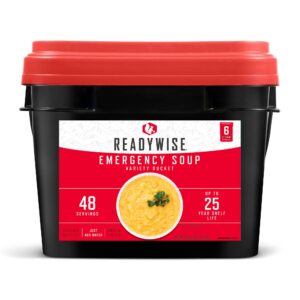Preparedness Notes for Thursday — March 24, 2022
March 24th is the birthday of Dr. Arthur B. Robinson (of OISM fame) who was born in 1942. — SurvivalBlog Writing Contest Today we present another entry for Round 99 of the SurvivalBlog non-fiction writing contest. The prizes for this round include: First Prize: The photovoltaic power specialists at Quantum Harvest LLC are providing a […]
Are You Prepared for Hurricane Season?
Do you live in an area of the country that occasionally experiences hurricanes? If so, you know firsthand how devastating these storms can be. These tropical cyclones have sustained winds of 74 mph or stronger. Some have reached 195 mph.
At the center of the air circulation is the eye. There it’s relatively calm. But the strongest thunderstorms and winds circulate in the wall around it. People in the eye know they’re about to get hit with the ferocious eye wall.
There’s one advantage in dealing with a hurricane rather than a tornado. You have considerably more advance notice to prepare for it.
But both types of storms, as well as others, can be horrific. So even if you don’t live in a hurricane zone, you may find some helpful information here.
Hurricanes don’t watch the calendar
Hurricane season officially starts in 68 days. But it’ll be here before you know it. And as we’ve seen in recent years, named storms usually come earlier than June 1. So don’t wait to prepare.
One of the biggest downsides to hurricanes is they can be very slow moving. Which means they can produce excessive amounts of water. They can cause extensive flooding. They’re often accompanied by thunderstorms and tornadoes.
Hurricanes can knock out power for days or longer. And cut off usable water supplies. Some of the most destructive U.S. hurricanes in recent memory were Ida in 2021 and Laura in 2020. As well as Michael in 2018, Irma in 2017, and Matthew and Harvey in 2016.
In 2012, Sandy was the largest Atlantic hurricane on record as measured by diameter with winds spanning 1,100 miles. It affected 24 states. And caused an estimated $65 billion in damage. Especially in New Jersey and New York.
Having an emergency response plan in place in case a hurricane is heading your way is crucial. The key to dealing with a hurricane is advance planning.
Get your home ready
One preparedness action is impractical to do in advance. But you should be ready to start executing it at a moment’s notice. When you hear a hurricane is heading your way, quickly prepare your home. This involves:
- Boarding up windows with plywood or installing storm shutters.
- Securing your roof and siding to your house frame with straps.
- Reinforcing garage doors and trimming long tree branches. And bringing outdoor furniture into your house.
- Familiarizing yourself and your family with utility shut-off switches and valves in your house. In case you need to evacuate.
Other activities you should engage in prior to a hurricane approaching your area are:
- Familiarize yourself with emergency routes and shelters. Print out those routes and keep them in your vehicle’s glove compartment.
- Prepare an emergency kit you can use at home. Or if you have to evacuate. It should include all the supplies you’d need in a crisis. Including non-perishable food and water. Plus backup power, flashlights and a first-aid kit.
- Make yourself aware of community shelters in your neighborhood. Just in case you need to use one.
- Make sure your car has a full gas tank. And that important items such as a first-aid kit are in your car. Don’t park your car under a tree or power lines. Or in a low-lying area.
- Learn in advance which area hotels and shelters accept pets. Prepare go-bags for them as well.
- Place your important documents in a fireproof safe deposit box.
- Have a reliable National Oceanic and Atmospheric Administration (NOAA) weather radio.
During and after a storm
During a hurricane, assuming there was no evacuation order and you decided to ride it out, monitor emergency radio and mainstream media reports.
Close your blinds and move your most valuable possessions away from windows. And then stay away from those windows. Close interior doors and remain in your home’s interior rooms.
Once the storm has passed, continue to monitor weather reports. Try to use flashlights instead of candles if your power is out.
If you’re returning after evacuating, keep an eye out for flooding. As well as ruptured gas lines and damaged structures. Be aware that water may have become contaminated. Report any damage sustained by your home to your insurance agent as soon as possible.
You need an emergency weather radio
Earlier I mentioned having a weather radio handy. My recommendation is the 4Patriots Liberty Band Emergency Solar Radio.
This tactical information hub features NOAA weather alerts. With seven 24/7 weather channels and AM/FM and shortwave radio.
It includes an LCD display clock with alarm and an ultra-bright flashlight.
It’s lightweight with the ability to recharge with the power of the sun.
There’s a hand crank for emergency starting. It can power up other devices when you need them most. Including your cellphone.
We’ve made the 4Patriots Liberty Band Emergency Solar Radio as desirable as possible. But how’s this if you need extra incentive?
If you purchase three of them, I’ll knock a small amount off the price of each unit. And provide you with free shipping. And toss in a few bonuses. Including a free Patriot Power Cell, a free 72-Hour Survival Food Kit and a free $25 gift certificate.
Here’s how to get yours…
Some Initial Guerilla Warfare Lessons From Ukraine
With the Russian invasion of Ukraine, the world is witnessing true Fourth Generation Warfare (4GW). According to standard references such as the Infogalactic Wiki, 4GW has these elements and characteristics: Complex and long term Employs terrorism as a tactic A non-national or transnational base – highly decentralized A direct attack on the enemy’s culture, including […]
Preparedness Notes for Wednesday — March 16, 2022
Today is the anniversary of the Battle at Pound Gap Kentucky. (1862) — SurvivalBlog Writing Contest Today we present another entry for Round 99 of the SurvivalBlog non-fiction writing contest. The prizes for this round include: First Prize: The photovoltaic power specialists at Quantum Harvest LLC are providing a store-wide 10% off coupon. Depending on […]
When Is a Flashlight Not Just a Flashlight?
When you need light in the darkness, a flashlight is your go-to tool, right? Flashlights are one of the many things we take for granted these days.
But it wasn’t always this way. When people needed light before electricity, they used torches.
Those torches were followed eventually by candles, oil lamps, and kerosene lamps. Each involved a flame that had to be carried. So there was always the possibility of danger.
The incandescent light bulb and the dry battery were invented near the end of the 19th century.
Early flashlights needed rest
The flashlight was created in 1899. And there’s a good reason the word “flash” was used in the name. The small, incandescent electric light bulb was powered by batteries, with a contact switch turning the light on and off.
But these “flash lights” could not emit light for very long. They ran on zinc-carbon batteries that could not provide constant current for extended periods of time.
The user had to give these flashlights frequent rests.
Over time, as batteries improved and tungsten replaced carbon filaments, the flashlight became more dependable and popular.
Most of today’s flashlights run on disposable or rechargeable batteries. They use incandescent light bulbs or LEDs (light-emitting diodes). Incandescent bulbs have a tungsten filament. LEDs are semiconductors that emit light.
Standard flashlights still basically the same
Today, there are two basic types of flashlights: standard and tactical. We’ve all probably used a standard flashlight at one time or another.
Many continue to require big batteries. And they still turn on the same way as they used to and weigh about the same.
These basic everyday flashlights are handy when you’re looking for something under a couch. Or when you’re trying to find something in a dark closet. And, of course, when the power goes out in your home.
Standard flashlights are usually constructed from inexpensive aluminum or cheap plastic and low-grade steel. Many don’t last too long.
A variety of devices
Among the variety of flashlights we see today are incandescent bulb flashlights, LED flashlights and high-intensity discharge flashlights. Plus pressurized gas flashlights, solar-powered flashlights and headlamp flashlights.
As well as shake flashlights, USB-charging flashlights and utility flashlights. And heavy-duty flashlights and work flashlights.
They all have their place, and some are more effective than others. A high-intensity discharge flashlight, for example, can deliver a very bright light. That’s due to an electrical current that runs through a ball of ionized gas.
A shake flashlight turns on by shaking it. It’s powered by magnets that cause a reaction to produce light. A headlamp flashlight is ideal if you need to shine light on something you’re using both hands to work on.
Tactical flashlights are the best
Tactical flashlights are far superior to standard flashlights. So why settle for anything less?
Tactical flashlights look and feel much different. They’re more durable and weather-resistant. And they feature a variety of settings, such as strobe and SOS. Once you get used to a tactical flashlight, you’ll probably never use a standard flashlight again.
Most tactical flashlights are made with a higher grade of aluminum and are armor-coated. Normally they are lighter in weight than basic flashlights. And they can resist shocks, corrosion and whatever the weather throws at them.
The average standard flashlight gives you about 10 feet of brightness. That’s approximately 100 lumens. Tactical flashlights provide brightness to about 50 feet. And they give you visibility up to about 100 yards.
What to look for
Here’s what I look for in a tactical flashlight:
- Ultra-bright LED flashlight
- Solar panel
- Power bank
- SOS light and strobe
- Work light
- Seatbelt/rope splitter
- Glass-breaking hammer
- Compass
- Magnet
- Lightweight
- Anti-slip handle
- Adjustable wrist strap
It’s a life-saving tool
A tactical flashlight is not only superior to a regular flashlight. It could also save your life. Here are six ways that could happen.
Spotting danger in the darkness. If you find yourself walking in a dark area – due to a power outage or if you’re camping in the woods – a flashlight is a big help for finding your way and avoiding pitfalls. You might even spot a human with bad intent or an animal looking for its next meal. Seeing either of them before you get too close could save your life.
Escaping from a hazard zone. If there were a chemical spill near where you live and the power were knocked out, a flashlight might be the only tool at your disposal to help you get out of the region as quickly and safely as possible. The same thing would be true if you were dealing with a fire, flood, earthquake or other disaster that would require you to get away quickly.
Signaling for help. If you get lost in the wilderness, whether during an escape from a bad situation or just a camping trip, or are stranded somewhere, a flashlight could be used to signal for help. Especially if your flashlight has a built-in SOS component or a strobe function to it. Light carries a long distance in a short amount of time – something like 186,000 miles per second – and it will attract attention if someone is able to observe it.
Self-defense from an attacker. There are weapons that would be more useful than a flashlight if you’re attacked. A gun comes to mind first, of course. But most of us don’t have immediate access to that type of weapon when we’re out and about. And there are usually restrictions on how and when they can be carried. A flashlight can temporarily blind an attacker to allow an escape, while its barrel can be used for a counterattack.
A vehicle breakdown. If you have to get out of your vehicle after pulling off to the side of the road, your hazard lights should help other drivers see your car. But they won’t help you see what’s going on under the hood. A flashlight will come in very handy in this situation, as it would if you were changing a tire. And if you have to abandon the car and walk somewhere in the dark, it will help light your way.
Charging a cellphone for an emergency call. If your cellphone is dead and you need to make a call for help, some tactical flashlights will enable you to charge it. That phone call could allow you to escape a very dangerous situation.
Everybody needs a flashlight. And several of them are much better than having just one. But make sure you have tactical flashlights because they can do so much more.
Cade’s Corner: Accurate Communication Is as Easy as Alpha, Bravo, Charlie
Hi there. Cade here.
There are very few things more important in a life-threatening survival situation than communication. Be it gathering information, better understanding a potential/current situation, or calling for help.
And the degree to how accurate this communication is could be the difference between living and dying!
Think about it. There are dozens of accent variations here within the United States alone. Imagine taking three people – one from Boston, one from New Orleans, and one from San Diego – and having them read the same sentence.
There’s a good chance two in the group will have absolutely no idea what the third is saying! Now broaden this group to include several English speaking foreign countries and the miscommunication could be off the charts.
This is the primary reason why the military came up with the phonetic alphabet, also known as military alphabet, spelling alphabet, radio alphabet, or telephone alphabet.
Here’s how it works. A standardized set of codewords are assigned in order to refer to the letters in the English alphabet. A = Alpha, B = Bravo, C= Charlie, and so on. This chart contains the full alphabet codewords:

Now… let me give you a few examples from my time in the SEAL teams to demonstrate why this was so vital.
When calling in an airstrike, the difference between the pilot hearing the letter “P” and the letter “T” was the difference between mission success and my entire platoon dying. Or when I called for a “hot extract” and if our location description was mistaken for an “N” when it was an “M.”
Get my point? Again, in life-threatening situations there can be no room for error.
Now I’ve stressed the importance of accurate communications. But I want to talk about how urgent TIMELY information is as well.
Ask anyone that lives in a hurricane or tornado zone of our country. Getting accurate and timely information is the difference between their family getting ahead of the disaster, or getting covered by it.
Recently many residents of Texas and surrounding states had to endure prolonged power outages. Ask them how valuable accurate and timely information was!
And God forbid our country finds itself in a large-scale offensive military assault or terrorist strike. Accurate and timely information could protect us from extinction.
As of right now, we don’t know how the Russian invasion of Ukraine will play out. But if Russia expands its aggression to attack surrounding NATO countries, Americans could find themselves in an all-out war.
Yes, a little dark but also a call to action. If you want to ensure you always have access to timely, accurate information, my advice is to get at least one 4Patriots Liberty Band™ Tactical Radio. It’s a small investment for invaluable information should the worst occur.
Be a survivor, not a statistic,
Cade Courtley
Former Navy SEAL / 4Patriots Contributor
4Patriots Donates Products to Organization Helping Vets With Financial Struggles
Serving your country in the military can be a very harrowing experience. Away from family and friends. Facing daily dangers. Knowing at any moment you could experience a life-threatening injury… or worse.
The demands upon our servicemen and women can be crushing. Physically and emotionally.
To make matters worse, many of these brave heroes struggle when they return to civilian life. Their problems take many forms. But often the most immediate one is financial.
Finding an affordable place to live and a decent-paying job can be overwhelming for anyone. And especially for those who’ve been away from the American mainstream for several years or more.
Organization Formed in 2009
And that’s where the Xtreme Couture G.I. Foundation (XCGIF) comes in. The non-profit was formed by Randy Couture in 2009.
Its purpose is to raise money and awareness to this cause. They wish to assist our nation’s combat veterans and their families suffering with financial burdens as they return to civilian life.
Based in Las Vegas, Nevada, the organization consists of a volunteer staff. XCGIF works directly with companies sharing the goals of helping our nation’s military families.
In 2021 the organization held a fundraiser to provide for their activities. And raise awareness of the needs.
4Patriots donated a number of products. Including a HaloXT Tactical Flashlight and a Patriot Power Cell. As well as a 72-Hour Survival Food Kit and a Patriot Pure Personal Water Filter.
Stay with me here because at the end I’m going to let you know how you can encourage our veterans.
UFC Champion Provides Troop Morale
Randy is an actor and UFC champion. He’s also a former collegiate and Greco-Roman wrestler. He served in the U.S. Army 101st Airborne from 1982 to 1988.
Next he was an assistant wrestling and strength conditioning coach at Oregon State University. He also claimed victory in the heavyweight division of his first UFC appearance.
He’s the only UFC competitor to hold titles in both the heavyweight and light-heavyweight divisions. He was inducted into the UFC Hall of Fame in 2006.
Randy runs his own gym (Xtreme Couture MMA) and clothing line (Xtreme Couture MMA Clothing). He has also been a UFC and Professional Fighters League commentator.
Randy visits military bases and hospitals to provide troop morale. He sits on the board of the nonprofit Merging Vets & Players. It creates an environment for veterans and former athletes to be as productive off the field as they were on it.
Civilian Life Transition Is Challenging
What was Randy’s motivation for establishing XCGIF? Let’s hear about it in his own words. “I had the opportunity to go to Iraq in 2006 for 12 days and visit 6 FOBs (Forward Operating Bases),” he said.
“Being in a war zone touched me. I had taken that same oath and done the same training many of those soldiers I met there had. But I never had to put it on the line.
“In ’07, I went to Washington, D.C. and helped put on a barbeque at the Fisher House and walk the wards. Meeting soldiers and families fresh off that same battlefield was a stark experience.
“I heard many horror stories from troops and their families about the financial and psychological struggles. Their transition out of service and back to civilian life galvanized my thoughts.
“I wanted to find a way to give back. And take some of that pressure off those who had already sacrificed so much. XCGIF was founded out of those experiences.”
Double-Amputee Teaches Resilience
Among the ways XCGIF provides relief is through foreclosure mortgage payments. Plus utility bills, vehicle payments and home repair.
Others are through medical bills from military injury. As well as mental health support, a physical wellness program and peer support. And special equipment needs and transition/meditation services.
Several events in 2021 helped raise funds for the organization. Including the 5K Virtual Ruck, Run, Walk in November. Plus the MC Ride for Our Troops in September. And the Motorcycle Poker Run in May and the 11th annual Christmas Eve Run.
A speaker at two of XCGIF’s past events was Mary Dague. She’s had to battle incredible adversity. From childhood trauma to losing both arms in Iraq to surviving breast cancer.
Mary is a former Navy Explosive Ordinance technician and Purple Heart recipient. She has dedicated 10 years to helping combat wounded veterans deal with depression and suicidal thoughts. She also tours the nation as a motivational speaker.
Donations Always Welcome
“We do our best to provide financial assistance to those struggling to get back on their own two feet,” Randy said. “We’ve opened up opportunities for personal counseling for vets. Many need professional help developing new coping skills.
“We have added financial assistance opportunities for any vet through our website. We’re also providing new connections to the veteran communities in seven cities with Vets and Players.
Anyone wishing to make a donation to XCGIF can visit the organization’s website (www.XCGIF.org) and click on “Donate.” 100% of donations help soldiers and their families with financial burdens.
Sending a message of gratitude is another way to get involved. Or volunteering at fundraisers to help support military families during a difficult transition.
“Our vision is to be the provider of choice for military and veteran families when they have critical short-term and long-term needs. We couldn’t do this without you.”
As promised, here’s something you can easily do to say thanks to a U.S. veteran.
Please take a few minutes to write a letter of gratitude to veterans who visit war memorials and other sites through the Honor Flight Network and send it to us.
Click here to submit your note to them. We will print it out for you and hand out these letters to those veterans. They will be a huge source of encouragement to those who risked their lives for our freedom.
My top 5 must-have survival gadgets
In the SEAL teams, if you don’t have the right gear — you don’t come home.
It might be as simple as the extra pair of AA batteries wrapped in tape that made all the difference on a mission in Iraq…
Or that one extra quart of hydraulic fluid that kept my teammate’s heavily damaged helicopter airborne until he was able to safely land it in Afghanistan…
Then there’s the 5 oz. self-applied tourniquet that has saved thousands of lives over the last decade. The fact is, the right tools make all the difference.
But what are the “right” tools? I’ve had to rely on each of these types of tools in many different situations and I can personally attest to their efficacy and life-saving abilities.
Not only do I cover how each of these tools come in handy in critical circumstances, but also how these items – if not part of your everyday carry – at least need to be in your arms reach “Go Bag.”
1. Power: We live in a world where most folks can’t go an hour without their gadgets, TV, mobile phone or their laptop. Well when the SHTF that might not be the case. But if you are fortunate enough to be in a situation where your personal electronics are still working, you are going to need power. This is why I am placing this as the first in my top 5 as a must have for survival. Whether it’s solar power, or rechargeable batteries, having backup power is a must. I highly recommend these USB Rechargeable Batteries.
2. Tactical Rigger Belt With D-Ring Buckle: More than just keeping my pants up, this type of belt has a heavy-duty quick-release buckle that allows the wearer to remove it quickly and use it as a weapon. The D-ring can be used for emergency descent from a high point, used to anchor someone else or as an attachment point to keep someone close in a low-visibility situation.
3. Multitool: You get a lot of bang for your buck with a good multitool. You can cut with it, make repairs with it, even fight with it. I prefer a more robust set of pliers than the needle nose variety that comes on many brands, including the collapsible “fist pack” size.
4. Water Filter: You can go weeks without food, but you will only survive a few days without water. In a survival situation, you can’t always expect clean water to be easily available. Which is why you need to be ready to filter out any possible contaminants that may be lurking in your water supplies. Having a water filter ready and available will also help get you access to clean, drinkable water immediately through streams, puddles, lakes and more.
5. Butane Lighter: There are several reasons you may need to start a fire — to keep warm, cook a meal or perhaps signal someone — and you can’t count on a disposable lighter when that time comes. With the right collection of gear, you will be more prepared to handle any crisis situation and make it home alive. So start building your supply today so that you can be ready for whatever crisis arises.
Best Auto Knife | Top 7 Automatic Knives on Amazon 2022
Whether you are a survivalist, or a knife collector, having the best auto knife in your arsenal is something you can never overlook considering how handy it comes. If you are looking to add one to your survival gear, this roundup of the top-rated on Amazon will send you in the right direction. RELATED: 7 Best […]
Recruiting Law Enforcement & Veterans for Your Group, by C.J.B.
Prior to an “end of the world” scenario… one can add or enhance your group’s abilities, skill-sets, technical knowledge, and tactical prowess by adding veterans, reserve military members, and law enforcement personnel (LEOs) to your team roster. So what do veterans/military members and law enforcement professionals bring to the table? Intangibles/Tangibles: There are several unique […]
